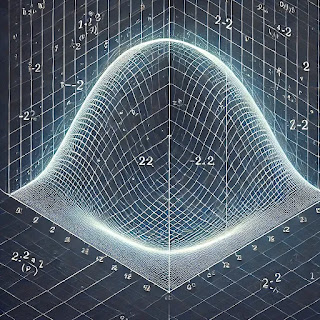Graph in Mathematics: 7 Key Insights for Mastering Graphical Concepts
In mathematics, graphs are powerful visual tools that foster understanding between variables, solve equations, and interpret data. Preparing for a test or taking a deeper dive into mathematical concepts can be dramatically improved by mastering graphs; problem-solving skills and conceptual clarity would be bumped significantly. This article discusses seven key insights into graphs to ensure you know them totally.
The Importance of Graphs in Mathematics
Graphs bridge the gap between abstract mathematical concepts and their real-world applications. They provide a visual representation of equations, functions, and data, making complex ideas more accessible. For students, understanding graphs is crucial as they appear across various topics, including algebra, geometry, calculus, and statistics.
By interpreting and constructing graphs, students develop critical thinking skills and a deeper appreciation for mathematics. Whether analyzing trends in data or solving equations graphically, mastering this skill is essential for academic success.
1. Understanding the Basics of Graphs
A graph represents a relationship between variables on a coordinate plane. Some of the most common types of graphs include line graphs, bar graphs, pie charts, and scatter plots. When math is involved, one often deals with Cartesian graphs and, therefore uses the x-axis and y-axis to plot points.
Graphs of equations or data can always be quite graphed. An equation defines the relationship between variables while a data set provides specific values to plot. Mastery in plotting a graph begins with understanding basic components like axes, scale, and the origin.
2. Linear Graphs and Their Applications
Equations in the form y = mx + c can be graphed as straight lines, which is to say, with a constant rate of change, where m represents the slope, and c the y-intercept.
Real-life applications of linear graphs include speed calculation, trend analysis, and systems of equations. Students should concentrate on the interpretation of slopes and intercepts since they reveal useful information about the nature of the relationship under investigation.
3. Quadratic and Non-Linear Graphs
Quadratic graphs take the form of equations such as y = ax² + bx + c and are parabolas. Such graphs are critical in understanding the concepts of maxima, minima, and the roots of equations.
Beyond quadratic equations are non-linear graphs including exponential, logarithmic, and trigonometric functions. All have unique properties and applications. For example, exponential graphs are necessary to understand growth and decay. Trigonometric graphs are vital in studying periodic phenomena.
4. Interpreting Graphical Data
Data from graphs should be interpreted as part of mathematics skills. Students must identify the following points:
- Points of intersection
- Slope and curvature
- Maximum and minimum values
- Asymptotes and discontinuities
This skill is particularly essential in statistics and calculus, as graphs are highly used to interpret trends and solve problems.
5. Practical Applications of Graphs
Graphs go beyond textbooks and into real-world applications. They are used in engineering, economics, biology, and social sciences. For instance:
- Engineers use graphs to model systems and optimize designs.
- Economists analyze supply and demand curves to predict market behavior.
- Biologists track population growth and ecological patterns using graphical models.
Understanding these applications helps students appreciate the relevance of graphs in everyday life.
6. Tips for Constructing Accurate Graphs
Constructing accurate graphs requires attention to detail and adherence to proper techniques. Here are some tips:
- Use a consistent scale for the axes.
- Label axes with appropriate units and variables.
- Plot points accurately and connect them smoothly.
- Highlight important features like intercepts, maxima, and minima.
Practicing these techniques ensures clarity and precision, which are essential for effective communication of mathematical ideas.
7. Overcoming Challenges in Graphs
The obstruction of complex graphs or abstract concept that students face often relates to:
- Habits from practice: Solving a variety of problems, so one gets confidence in doing it.
- Aids from visualization: Using graphing software or tools for better visualization.
- Guidance: Seeking the teacher and peers if they need clarification.
By overcoming these impediments, students can strongly develop graphical concepts.
5 Questions on Graph in Mathematics
1. What are the types of graphs? There are the line graph, bar graph, pie charts, scatter plot, and Cartesian graphs for equations.
2. Why do graphs matter in math? Graphs show visual representations of variable relationships that otherwise may seem difficult to grasp or interpret in an abstract manner.
3. What is the difference between a linear and quadratic graph? Linear graphs are represented as straight lines for constant rates of change, while quadratic graphs represent parabolas and variable rates.
4. What tools can be used to graph? Graphing calculators, software (for example, Desmos), and spreadsheets can make it easier to create and analyze graphs.
5. How can students become better at interpreting graphs? Practice, visual aids, and attention to key features such as slopes, intercepts, and intersections can all help improve interpretation skills.


No comments:
Post a Comment